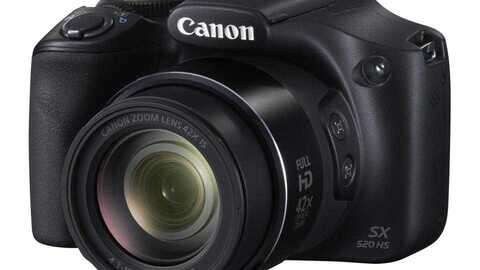Canon SX520 HS review
The Canon SX520 HS is a mid-price bridge camera, with a whopping 42x zoom lens sat in front of a less remarkable 1/2.3in sensor. Larger sensors are increasingly common, even at this price, but not in ultra-zoom models. The only camera to offer both a big zoom and a big sensor is the Panasonic FZ1000 , and that costs £750. All is not lost, though. If you want to shoot distant subjects in bright light and aren't so concerned about low-light photography, this kind of camera makes a lot of sense.
£299 isn't exactly cheap, but the SX520 HS has various signs of being built to a price. There's no viewfinder, and the 3in screen isn't articulated. That means the camera must be held with outstretched arms at eye level for a clear view of the screen. This isn't ideal for holding it steady while framing telephoto shots. There's no Wi-Fi, GPS or RAW capture and the slim battery lasts for just 210 shots.
It's well equipped with physical controls. There's a mode dial and command dial on top, plus buttons for ISO speed, exposure compensation, continuous mode, flash and macro. Less common are the pair of buttons on the lens barrel. One pulls the zoom back momentarily to help locate subjects in the frame – just the thing when shooting at the telephoto end of the zoom. A quick press of the same button enables a Zoom Framing Assist mode, which works in conjunction with face detection to zoom in on a face, upper body or whole body automatically. The other button uses the optical stabilisation to help keep a subject in the centre of the frame. This button also slows the zooming speed down for careful adjustment.
The camera is reasonably responsive in normal use, powering up and capturing a shot in 1.6s and taking 1.1 seconds between shots. Continuous mode is less impressive, though, lumbering along at 1.3fps. There's no live view in continuous mode, and with image reviews running two frames behind the action, there's absolutely no chance of following moving subjects.
Salvation comes from a scene preset that captures 4-megapixel frames at 10fps, and can continue until the card is full. 4 megapixels isn’t enough for large prints but it's fine for viewing on TVs, computers and tablets. There's no direct control over the shutter or ISO speed in this mode, but the very fast shutter speeds used should work well in most cases, and exposure compensation is still available. It's odd that Canon has provided a dedicated button to access the largely pointless 1.3fps mode, but hides the 10fps mode among the scene presets. Still, it's a great feature for those who know where to find it, and particularly well suited to wildlife photography.
